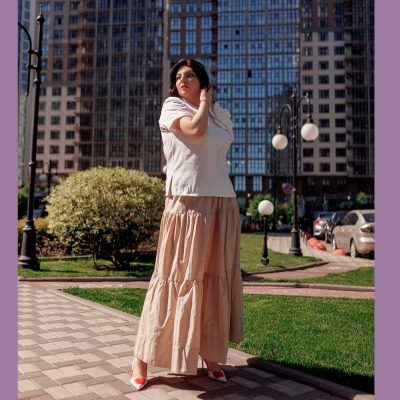Questions and answers
Question 1.
I know that the Japanese have a ritual, or punishment, of cutting off the little finger. Why the little finger and why is it done?
Indeed. For many centuries in Japan, there was a system of punishment (now called the Yakuza mafia practices) that was carried out by cutting off the phalanges of the little finger. For the first offense, one phalanx (nail), for the second offense, the second phalanx, and so on. It is called Yubitsume (指詰め), from the expression “to shorten the finger”. The ultimate goal of the punishment is that a person without a little finger cannot hold a sword in such a way as to strike it correctly and defeat the enemy. Such warriors were considered crippled, that is, defeated. This is the punishment of being defeated in advance. And everyone saw it.
Question 2.
What is the most important area of the face?
For the average observer, these are the eyes, because the spectrum of all the main points is reflected in them. Micromimicry around the eyes is the main indicator. It is a system of indicators, a state controller, and a detector of the probability of truth and lies. But for an expert, absolutely all areas of the face are important. Because the expert does not look at a single manifestation, but at a combination of manifestations and their dynamics and sequence. For profiling, the main effect is produced by a silhouette and a system of consistent movements and steps. Physiognomy uses algorithms for the dynamics of facial and micromimicry points.
Question 3.
Do speech features affect facial structure?
Yes. Not everyone knows that, for example, Eastern languages curve the palate in a certain way. And even more so, not everyone knows that a non-standard shape of the palate and uneven teeth indicate a predisposition to linguistics. Such people have a subconscious inclination to the so-called ancient (dead) languages, such as Middle Egyptian, as well as to graphology (the science of writing), sign systems, and programming systems in any computer language. No one will let us look into their mouths, but we can tell right away by their smiles. We’ll look at smiles later. I will tell you a lot of interesting things.
Question 4.
Can makeup (if you do the same thing) change your self-perception?
If a person voluntarily wears a “cat mask” for a long time, everyone consciously perceives him or her as a cat, he or she will begin to get used to the “cat image.” Not subconsciously, but consciously. This is important. It is a skill. She can get used to it so much that she starts to identify herself with the cat. But in a stressful situation, he will behave the way he really feels. Another thing is when you don’t like the “cat mask” (or makeup), but you are told that you have to wear it. You get injured. 9 out of 10 traumas fall on the subconscious. Not on the consciousness, but fall into the basements of thinking and sit there, waiting for the moment to manifest. And even if we don’t wear anything we don’t like anymore, when we see an unpleasant stranger’s look, we “read” it as if that person saw that unpleasant “cat” in you, saw the flaws and shortcomings that you were forced to wear (the complex is running). Therefore, when you are going to “feed” your self-perception with something, remember this.
Question 5.
How is a silhouettally low level of intelligence detected? And how is it mimetically understated?
Mimically, it is an open mouth. The mouth is open subconsciously because the person does not want to strain and think. It becomes a habit – both the mouth and not thinking. It is laziness. We have a low level and a tendency to forget to broaden our horizons.
A silent subconscious tilt of the head to the side. No need and no reason.
Question 6.
Could you sketch a brief portrait of a person who loves everything natural? I mean clothes, furniture. If something is wrong, he scandalizes, checks everything carefully.
He is an ambitious person. She aspires to a high position and feels underestimated. Has a number of childhood traumas, but overcomes difficulties and moves forward. Proves to others that he/she “deserves” and shows by his/her behavior (accent) that if they have not realized it yet, they are hopeless. It is productive in itself. Observant, intelligent, and even creative. She believes that people have different levels and teaches everyone that she is the highest. Difficult to communicate with, because instead of solving issues, she starts to figure out what she deserves right now. She wastes time and loses interesting people along the way. She is sensitive to coercion in any form. Little things are more important than the main thing. Neurotic. Afraid of restrictions. Conflicted, because she protects the one who is “in himself.”
Question 7
I am 38 years old. I am a foster child. I’ve known this since I was a kid, and I’m okay with it. But everyone says that I look like my mother (foster mother) and the older I get, the more I look like her. How is this possible?
This is not only possible, but also normal. Facial expressions and some forms of cuts and wrinkles change with age under the influence of thinking. You think like your mother. You follow her throughout your life and take her example, both consciously and subconsciously. You move on, respecting her and taking what you like about her. Your thinking and facial expressions adjust. And it’s great!
Question 8.
My husband has never been like me (I consider myself fragile and soft). He is irritable, his features are rough. To be honest, he is harsh and rude. However, after returning from the front, he became the opposite – gentle in his behavior and features. I am shocked! How can this be understood?
A person behaves in a way that is comfortable, natural, and appropriate. It depends on the circumstances, the environment, the habits. We are influenced by our place, environment, education, culture, heritage, and we form our character (an adaptive system to life). He was like this because he felt that this is how he would achieve results. He lived like that, got what he had. However, in the war he saw pain. Only pain and the compassion that comes after it make a person kinder, even when it would seem inappropriate (in war). But all that he saw, felt, and passed through himself made his thinking kinder, gentler, and more tender. And with thinking, features and facial structures.















